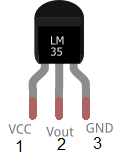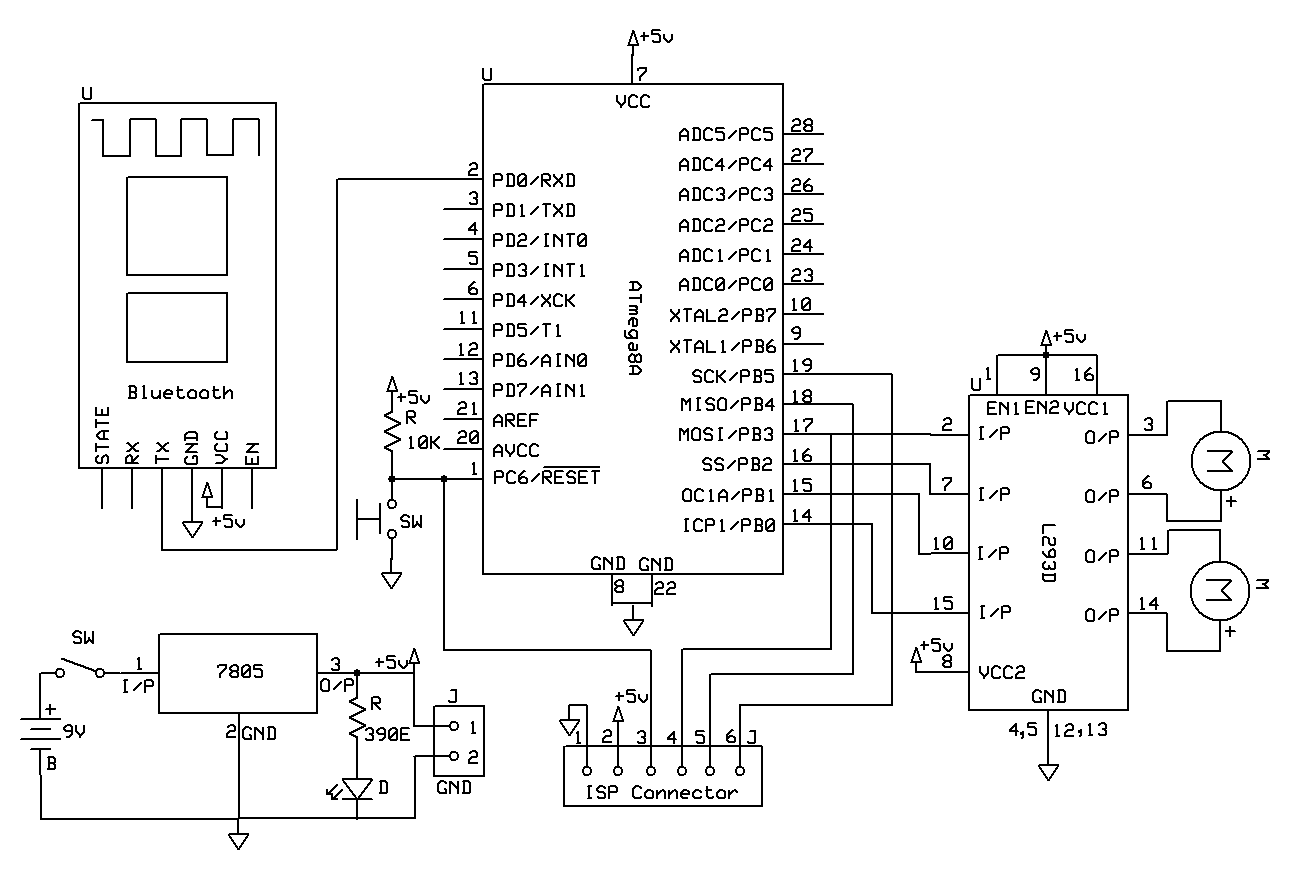The LM35 series are precision integrated-circuit temperature sensors, whose output voltage is linearly proportional to the Celsius (Centigrade) temperature. The LM35 thus has an advantage over linear temperature sensors calibrated in ° Kelvin, as the user is not required to subtract a large constant voltage from its output to obtain convenient Centigrade scaling.
In this project, we are measuring the temperature using the LM35 temperature sensor and display on the two seven segment. The LM35 sensor can measure the temperature from full −55° to +150°C range. For display the temperature up to +150°C we need three seven segment display. But in this project, to make project simple and easy to understand we used only two segments.
The main part of this project is the understanding the analog to digital conversion(ADC) in the AVR microcontroller and the other is how to display that temperature value to the two seven segment display.
Table of Contents
What is LM35 Temperature Sensor
The LM35 series are precision integrated-circuit temperature sensors, whose output voltage is linearly proportional to the Celsius(Centigrade) temperature. The LM35 does not require any external calibration or trimming to provide typical accuracies of ±1⁄4°C at room temperature and ±3⁄4°C over a full −55 to +150°C temperature range.
Features
- Calibrated directly in ° Celsius (Centigrade)
- Linear + 10.0 mV/°C scale factor
- 0.5°C accuracy guaranteeable (at +25°C)
- Rated for full −55° to +150°C range
- Suitable for remote applications
- Low cost due to wafer-level trimming
- Operates from 4 to 30 volts
- Less than 60 μA current drain
- Low self-heating, 0.08°C in still air
- Nonlinearity only ±1⁄4°C typical
- Low impedance output, 0.1 W for 1 mA load
More about LM35 Datasheet.
LM35 Pinout

How to Calculate Analog to Digital Value – Formula
Use the following ratio:
e/V max = d/2 n– 1
where
- V max maximum voltage that the analog signal can assume
- n number of bits available for the digital encoding, Here n = 10
- d present digital encoding
- e present analog voltage from the sensor
Example:
How to Calculate the Digital Value if we have 30 °C temperature.
Here
scale factor = 10.0 mV/°C or 0.01V/°C
If we have 30 °C temperature than Voltage = 30 * 0.01 = 0.3V
So e = 0.30V
Vmax = 5V
d = e * 2 n– 1 / V max
d = 0.30 * 1023/5
d = 61.38 or almost double
Note: Every time we calculate the digital value, it is double to the temperature.
So in programming, we divide it by 2 for getting the approximate value of the temperature.
LM35 Temperature Sensor and Seven Segment Display AVR Connection

LM35 Temperature Sensor and Seven Segment Display AVR Code
#include<avr/io.h>
#include <avr/interrupt.h>
#include<util/delay.h>
int count=0;
int d0,d1,seg;
int delay=5;
int ReadADC(uint8_t ch)
{
ADMUX=ch;
//Start Single conversion
ADCSRA |= (1<<ADSC);
//Wait for conversion to complete
while(!(ADCSRA&(1<<ADIF)));
ADCSRA|=(1<<ADIF);
return(ADC);
}
void initADC()
{
ADMUX=(1<<REFS0);
ADCSRA=(1<<ADEN)|(1<<ADIE)|(1<<ADPS2)|(1<<ADPS1);
}
void segment_code(int seg)
{
switch(seg)
{
case 1:
PORTD=0b11111001; //1
_delay_ms(delay);
break;
case 2:
PORTD=0b10100100; //2
_delay_ms(delay);
break;
case 3:
PORTD=0b10110000; //3
_delay_ms(delay);
break;
case 4:
PORTD=0b10011001; //4
_delay_ms(delay);
break;
case 5:
PORTD=0b10010010; //5
_delay_ms(delay);
break;
case 6:
PORTD=0b10000010; //6
_delay_ms(delay);
break;
case 7:
PORTD=0b11111000; //7
_delay_ms(delay);
break;
case 8:
PORTD=0b10000000; //8
_delay_ms(delay);
break;
case 9:
PORTD=0b10010000; //9
_delay_ms(delay);
break;
case 0:
PORTD=0b11000000; //0
_delay_ms(delay);
break;
}
}
int main()
{
DDRC=0b0000000;
DDRD=0xFF; // PORT D as output port
DDRB=0xFF; //PB0 and PB1 is segment select pins
initADC();
int analogVal;
while(1)
{
analogVal=ReadADC(0);
analogVal=analogVal/2;
count=analogVal;
//variable do containing the 10th digit of temperature
d0=count%10;
seg=d0;
PORTB=0b11111101;//select segment 0
segment_code(seg);//match and display
//get the 100th digit of temperature
d1=count/10;
d1=d1%10;
seg=d1;
PORTB=0b11111110;//select segment 1
segment_code(seg);//match and display
}
return 0;
}



